#Navionics
Explore tagged Tumblr posts
Link
#Blauwasser#Blauwassersegeln#BoatingApp#Garmin#Handynavigation#Kartenplotter#Mittelmeer#NaviApp#Navigation#Navionics#NavionicsBoatingApp#Quatix#Quatix7Pro#Segeln#Sizilien
0 notes
Text
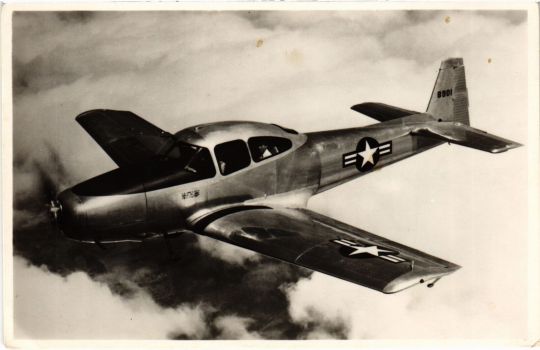
North American L-17A Navion aircraft on a vintage postcard
#postkarte#North#briefkaart#carte postale#photography#vintage#Navion#postal#postcard#ephemera#photo#ansichtskarte#American#tarjeta#historic#postkaart#aircraft#sepia
9 notes
·
View notes
Text
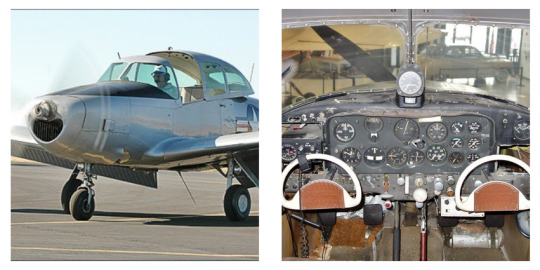
#plane#l17#navion#fun fact when I was a kid I had sleeping issues and the only time I could sleep soundly was in the plane#avation#poll#smash or pass#smash or pass poll#tumblr polls#thank you!#old object
22 notes
·
View notes
Video
North American L-17 Ryan Navion N4238A A-030 USAAF 48-1030 Served in the Korean War by Chris Murkin Via Flickr: North American L-17 Ryan Navion N4238A A-030 USAAF 48-1030 Served in the Korean War Photo taken at EAA Airventure Wittman Regional Airport Oshkosh Wisconsin USA July 2024 DAF_8657
#American#L-17#Ryan#Navion#N4238A#USAAF#48-1030#Photo#PLANE#Prop#NIKON#Display#EAA#Airventure#Oshkosh#Wittman#Wisconsin#AIRCRAFT#AEROPLANE#Aviation#Airshows#Show#A-030#Photographic#Photography#picture#Z9#United States Army Air Force#North American#Korean War
9 notes
·
View notes
Text
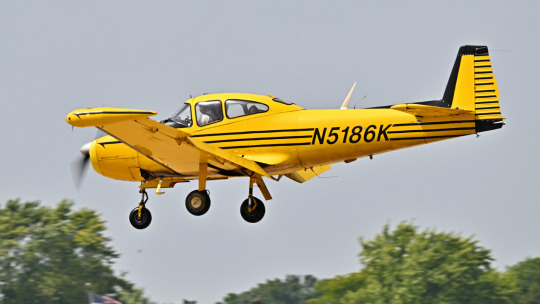
1950 Navion arriving for Oshkosh 2023
#Ryan Navion#airplane#Oshkosh#flying#plane#vintage aircraft#General Aviation#EAA Airventure#aviation
24 notes
·
View notes
Text
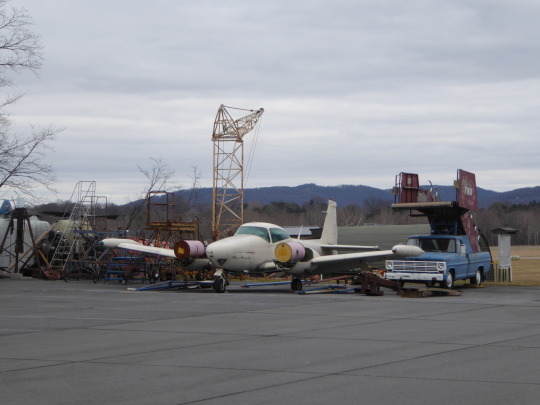
Twin Navion out in the storage area.
5 notes
·
View notes
Text





Been loving my time with the Ryan Navion B, love my STOL inclined Comanche. Excited for whenever the Rangemaster gets released
1 note
·
View note
Text
୭ৎ ִֶָ࣪Navia inspired names/titles/prns! ࣪ ⊹

⠀。 ㅤ⠀˙⠀header by xiurinn on pinterest! ◞ ྀི◟ ͜ ׁ ˙ ◞ ྀི◟ ͜ ◞ ྀི◟ ͜ ׁ ˙ ◞◞ ྀི◟ ͜ ׁ ˙ ◞ ྀི◟ ͜ ◞ ྀི◟ ͜ ׁ ˙ ◞ ︵ names: Navian, Naviara, Navielle, Navion, Navira, Navirael, Navinia, Naviara, Naviora, Navielle, Navianis, Naviora, Navithra, Navinara, Navalyn, Navessa, Navindra, Navelina, Navirose, Navindra, Naviellea, Navialda, Navicara, Naviluna, Navienna ︵ titles:
"Navigator of the Unknown", "Beacon of Bravery", "Sovereign of the Seas", "Warden of the Waves", "Voyager of Valor", "Emissary of Exploration", "Sentinel of the Storm", "Champion of the Currents", "Guardian of the Abyss", "Herald of the Horizons", "Explorer of the Depths", "Protector of the Tides", "Pathfinder of Peril", "Defender of the Deep", "Adventurer of the High Seas"
︵ pronouns: Nav/Navi/Navis/Naviself, Via/Vian/Vias/Viaself, Nia/Nian/Nias/Niaself, Vee/Veen/Vees/Veeself, Navia/Navian/Navias/Naviaself, Avi/Avis/Avie/Aviself, Niva/Nivan/Nivas/Nivaself, Naya/Nayan/Nayas/Nayaself ◞ ྀི◟ ͜ ׁ ˙ ◞ ྀི◟ ͜ ◞ ྀི◟ ͜ ׁ ˙ ◞◞ ྀི◟ ͜ ׁ ˙ ◞ ྀི◟ ͜ ◞ ྀི◟ ͜ ׁ ˙ ◞
#navia#genshin navia#genshin impact navia#name suggestions#character names#title suggestions#pronouns#ideas#ask#genshin impact
4 notes
·
View notes
Text
Technologies Changing the Fishing Industry

Fishing, both as a hobby and a profession, traditionally relied on intuition and understanding nature. However, recent technological advances have transformed the way fishers interact with aquatic environments, making fishing practices more sustainable, data-driven, accessible, and efficient. Understanding some of the technologies used in modern fishing can improve your fishing experience.
GPS and mapping technologies have been instrumental in helping anglers and fishers navigate and track locations on the high seas. Some modern boats have integrated chartplotters that display tidal charts, depth contours, and topographical maps of lakes. This means that anglers are better equipped to log the catches they make in specific areas, mark hotspots, and share waypoints with other anglers. In addition to improving the efficiency of fishing efforts, GPS technologies help anglers avoid certain parts of the high seas, ensuring their safety.
Similarly, the adoption of fish finders and sonar technologies has changed how fishing operations are conducted. Fish finders usually send sound waves through the water and use the returning echoes to detect a cluster of fish. Some fish-finding technologies, such as Lowrance, Humminbird, and Garmin, have 360-degree sonar, down-imaging, and side-imaging capabilities that allow anglers to remotely see what's happening beneath the sea. The effectiveness of fish finders has made them almost indispensable in most large-scale fishing efforts. They convert hours of trial and error into minutes of productivity by helping anglers narrow down fishing spots.
Also, the use of cloud platforms and mobile technologies like ANGLR, Navionics, and Fishbrain makes it easiest for fishers to log their catches, connect with other fishing communities, and study weather patterns. These cloud platforms often utilize crowdsourced data, allowing anglers to contribute to a database of fishing intelligence. With this, it is easier to decentralize access to fishing knowledge while fostering a healthy sense of community among anglers.
Technology is helping both conservationists and everyday anglers be more mindful of their catch. Tools like electronic catch recorders, digital scales, and tagging devices are enabling researchers to track fish populations with greater accuracy. Many commercial and recreational boats now use electronic logbooks that transmit real-time data on what's being caught, which helps fisheries regulators manage stocks more effectively. Catch-and-release monitors are also gaining popularity, allowing anglers to check if a fish is healthy enough to be released back into the water, which supports better outcomes for aquatic ecosystems.
Another exciting advancement is the use of drones in fishing. Drones are particularly useful in surfcasting and offshore fishing, allowing anglers to scout for schools of baitfish or favorable water conditions from above. They can also be used to drop bait in hard-to-reach spots, extending an angler's reach well beyond the shore. Aerial imagery from drones helps assess environmental features, such as water clarity, vegetation, and access points, all of which can be difficult to evaluate from ground level.
The evolution of smart fishing gear is also changing the game. Some modern rods and reels are now equipped with sensors that track everything from casting distance to retrieve speed, syncing with smartphone apps to give users real-time feedback and personalized tips. Wearables designed for anglers, such as smartwatches or activity trackers, can monitor environmental conditions like wind speed, barometric pressure, and water temperature. These insights help anglers make better decisions and recognize patterns over time, making their fishing trips not just more successful but also more informed and enjoyable.
1 note
·
View note
Text
Premium Chartplotter Worldwide Basemap
Explore the Garmin GPSMAP 743 Chartplotter GN+ featuring a high-resolution touchscreen, preloaded Garmin Navionics+ charts with Auto Guidance+ technology, and support for optional Garmin Navionics
Premium Chartplotter Worldwide Basemap
About Company:-Riverside Marine has been a trusted name in marine electronics, offering sales, installation, and service for GMDSS and navigation equipment to both commercial and recreational vessels. Over the years, we’ve expanded to include major marine electronics brands, boat maintenance, and a wide range of marine-related equipment.Our team of factory-trained, GMDSS-certified, and FCC-licensed technicians brings expert knowledge and practical solutions to every project. We also carry obsolete equipment and spare parts, helping you maintain even legacy systems.
Click Here For More Info:- https://marineelec.com/product-category/gps-chartplotters/page/2/
0 notes
Link
#Blauwasser#Blauwassersegeln#BoatingApp#Garmin#Handynavigation#Kartenplotter#Mittelmeer#NaviApp#Navigation#Navionics#NavionicsBoatingApp#Quatix#Quatix7Pro#Segeln#Sizilien
0 notes
Text
Augmented Reality Navigation Market: Size, Share, Analysis, Forecast, and Regional Growth Breakdown to 2032
The Augmented Reality Navigation Market was valued at USD 1.06 billion in 2023 and is expected to reach USD 21.68 billion by 2032, growing at a CAGR of 39.97% from 2024-2032.
The Augmented Reality (AR) Navigation Market is witnessing rapid transformation, driven by the integration of AR technology into GPS and mapping systems. Enhanced user interfaces, real-time information overlay, and immersive visual guidance are reshaping how consumers and enterprises interact with their environments. From automotive heads-up displays to pedestrian and indoor navigation, AR is redefining navigation experiences with high precision and contextual relevance, enabling smarter decision-making and improving operational efficiency.
The surge in demand for Augmented Reality (AR) Navigation Market solutions across industries such as automotive, aviation, logistics, tourism, and retail is elevating the market's significance. This growth is supported by advances in mobile devices, 5G connectivity, and AI-based location recognition. AR navigation empowers users with intuitive pathfinding, obstacle alerts, and interactive elements, enhancing safety and engagement while bridging the gap between digital and physical navigation layers.
Get Sample Copy of This Report: https://www.snsinsider.com/sample-request/5984
Market Keyplayers:
Google LLC (Google Maps, ARCore)
Apple Inc. (Apple Maps, ARKit)
Microsoft (HoloLens, Azure Spatial Anchors)
WayRay AG (Navion, AR HUD)
Neusoft Corporation (Neusoft AR Navigation, Neusoft Intelligent Navigation System)
FURUNO ELECTRIC CO., LTD. (NavNet, FAR-1500 Radar System)
ARway Corp. (ARway Platform, AR Navigation Solutions)
Wiser Marine Technologies Ltd. (Wiser AR Navigation, Wiser 3D Maps)
Mapbox (Mapbox Vision, Mapbox AR)
Treedis (Treedis AR, Treedis Navigation)
ViewAR GmbH (ViewAR, ViewAR AR Navigation)
Artisense GmbH (Artisense AR, Artisense Navigation Engine)
IndoorAtlas (IndoorAtlas SDK, IndoorAtlas Positioning)
Hyper (Hyper AR, Hyper Navigation)
SITUM TECHNOLOGIES (Situm Indoor Navigation, Situm Platform)
Insider Navigation Inc (Indoor Wayfinding, Insider Navigation AR)
Wemap SAS (Wemap Indoor Navigation, Wemap AR)
Resonai Inc. (Resonai AR, Resonai Navigation Solutions)
Oriient New Media Ltd (Oriient AR, Oriient Indoor Navigation)
Navigine (Navigine AR, Navigine Indoor Navigation)
22Miles (22Miles Interactive Kiosk, 22Miles Wayfinding)
Sygic (Sygic AR Navigation, Sygic Indoor Navigation)
Veo (Veo AR, Veo Navigation)
HERE (HERE Indoor Positioning, HERE AR Navigation)
Esri (ArcGIS, Esri AR)
Market Analysis The AR navigation market is evolving through consistent innovations that aim to improve end-user interaction and situational awareness. Key industry players are focusing on strategic partnerships, acquisitions, and technological enhancements to strengthen their market presence. The automotive industry remains a critical segment due to the increasing adoption of AR heads-up displays (HUDs) and infotainment systems. Simultaneously, the retail and tourism sectors are leveraging AR to provide personalized and location-based experiences to consumers.
Market Trends
Increasing integration of AR with smart wearables for hands-free navigation
Adoption of AR navigation in urban mobility and public transportation planning
Rising investment in AR infrastructure by major tech firms
Development of AI-driven AR navigation apps for indoor environments
Enhanced AR features in next-gen vehicle infotainment systems
Collaboration between AR startups and automotive OEMs
Emergence of AR-based navigation tools in the logistics and supply chain industry
Market Scope The AR navigation market spans various applications and platforms, encompassing automotive, aviation, retail, logistics, and smart cities. It includes mobile AR applications, vehicle HUDs, AR glasses, and digital signage for indoor navigation. Both consumer-focused and enterprise-level solutions are expanding rapidly, with demand fueled by the need for real-time data, interactive user interfaces, and seamless digital overlays. The market’s scope is further broadened by increasing global interest in smart mobility, intelligent transportation systems, and enhanced customer experiences.
Market Forecast The future of the AR navigation market is poised for dynamic expansion, driven by continuous innovation and multi-sector adoption. As user expectations evolve and technology becomes more accessible, AR navigation will become integral to everyday experiences. Advancements in spatial computing, real-time 3D mapping, and AI will propel the development of intuitive, scalable, and personalized navigation platforms. The proliferation of smart vehicles, AR wearables, and connected city infrastructure will further reinforce the market’s long-term potential and relevance.
Access Complete Report: https://www.snsinsider.com/reports/augmented-reality-navigation-market-5984
Conclusion The Augmented Reality Navigation Market is steering towards a digitally immersive future where direction and destination converge through intelligent design. As industries embrace AR to enhance engagement, safety, and accuracy, navigation becomes more than movement—it becomes an experience. Stakeholders ready to innovate and invest will navigate this evolving terrain not just with clarity, but with a competitive edge that redefines how the world finds its way.
About Us:
SNS Insider is one of the leading market research and consulting agencies that dominates the market research industry globally. Our company's aim is to give clients the knowledge they require in order to function in changing circumstances. In order to give you current, accurate market data, consumer insights, and opinions so that you can make decisions with confidence, we employ a variety of techniques, including surveys, video talks, and focus groups around the world.
Contact Us:
Jagney Dave - Vice President of Client Engagement
Phone: +1-315 636 4242 (US) | +44- 20 3290 5010 (UK)
#Augmented Reality Navigation Market#Augmented Reality Navigation Market Scope#Augmented Reality Navigation Market Trends#Augmented Reality Navigation Market Growth
0 notes
Text
<262> Hardstyle Session 76: Future of Euphoric Hardstyle April 2016

youtube
Added to playlist Hardstyle Favourites.
08:37 Modul8 - Give It To Me 49:41 Navion & Oryon - Feelings of Love 53:05 In-Phase - Euphoria
Added to playlist Finality. 49:41 Navion & Oryon - Feelings of Love 53:05 In-Phase - Euphoria
0 notes
Video
1948 North American Navion Ryan N9TK USA by Chris Murkin Via Flickr: 1948 North American Navion Ryan N9TK USAF Photo taken at EAA Airventure Wittman Regional Airport Oshkosh Wisconsin USA July 2024 DAF_8842
#American#Ryan#Navion#Photo#PLANE#Prop#NIKON#Display#EAA#Airventure#Oshkosh#Wittman#Wisconsin#AIRCRAFT#AEROPLANE#Aviation#Airshows#Show#A-030#Photographic#Photography#picture#Z9#North American#Air Show#EAA Airventure#United States Air Force#N9TK#USA#flickr
9 notes
·
View notes
Text
Sheinbaum critica a Calderón tras declaración por sentencia a García Luna; 'es un cínico'
# Navional Sheinbaum critica a Calderón tras declaración por sentencia a García Luna; 'es un cínico'
0 notes
Text
Navigating Success: Enhance Fishing Expeditions with Quality Gear from The Boating Warehouse
Taking your boat or trawler fishing with the intention of collecting a big haul of fish? Buying boat accessories from the boating warehouse of reputable retailers is essential for quality of devices and gear during offshore boating expedition. Reputable businesses offer everything from safety equipment to anchoring and docking materials to thorough maintenance of fishing boat. The best thing is that one may select the best components online from the comfort of their home thanks to the leading manufacturers' exceptional customer service.
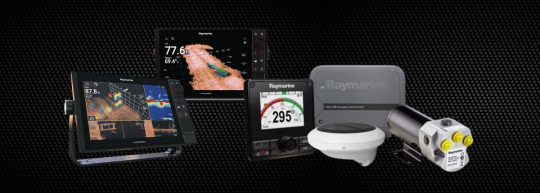
Boat seat is quite important for comfortable seating while one is on an expedition in the seas. Boats also need periodic maintenance, just like any other piece of machinery, to make sure there are no flaws that may lead to a malfunction in the middle of a rough sea. The installation of technology-enabled products as well as normal repair and maintenance is needed for boats to function effectively.
A Selection of Marine Goods Categories for Boats Offered by Well-Known Brands
Docking and Anchoring: These are essential for maintaining the boat securely grounded in its location. Every boat has to have operational rollers, winch kits, anchors, and other equipment at all times. Anchors should be able to withstand severe weather as they allow a boat to remain safely at the beach.
Electrical and Electronics: Compared to earlier times, fishing vessels now rely much more on technology. Electronic equipment like as heading sensors, digital radar, and navionics maps is necessary for both safe navigation and fishing. Given their importance, GPS radars, sounders, and other equipment must be installed on the fishing vessel. Furthermore, most fishing vessels are starting to utilise autopilots for better sea navigation.
In order to ensure that your fishing trip is enjoyable, top marine parts suppliers also provide repair and maintenance for their products. Visit the websites of reputable companies to get in touch with their helpful staff or to make an order for the supplies that best suit your needs or to have your boat restored.
Source
0 notes

